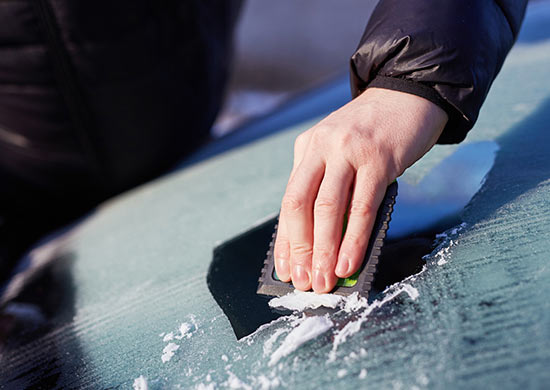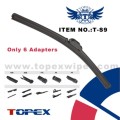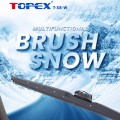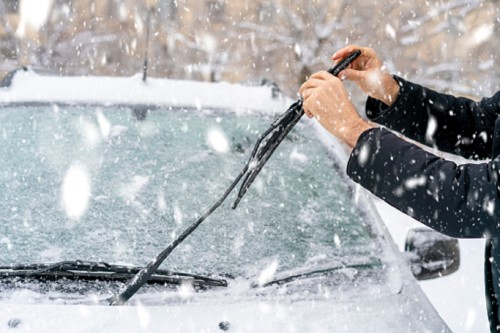Precautions for snow wiper blades
A Comprehensive Guide Snow Wiper Blades
When winter arrives and snow and ice become a part of daily life, ensuring that your car’s wiper blades are up to the task is essential for safe and stress-free driving.
In this topex comprehensive guide, we’ll cover the key precautions you should take to maintain and use snow wiper blades effectively. Not only will these tips help you navigate through snowy conditions safely, but they will also prolong the lifespan of your wiper blades.
1. Choose the Right Snow Wiper Blades
Selecting the appropriate wiper blades for winter conditions is crucial. Consider the following factors when choosing your wiper blades:
Winter Blades: Opt for winter-specific wiper blades designed to handle snow and ice. These blades are typically more robust and equipped with a rubber casing to prevent clogging.
Blade Material: Silicone or rubber-coated blades are excellent choices for snowy weather, as they resist freezing and remain pliable in cold temperatures.
2. Regular Inspection
Frequent inspection is vital to ensure your wiper blades are in optimal condition:
Check for Damage: Inspect the blades for any signs of damage, such as tears, cracks, or detachment from the frame. Damaged blades can’t effectively clear snow and may scratch your windshield.
Clean the Blades: Remove any snow and ice buildup from the wiper blades to maintain their flexibility and prevent streaking.
3. Proper Installation
Correct installation of your wiper blades is essential:
Securely Attached: Ensure the blades are securely attached to the wiper arms. Loose blades can cause poor contact with the windshield.
Correct Size: Use the correct size wiper blades for your vehicle to ensure they cover the entire windshield evenly.
4. Snow and Ice Removal
Clearing snow and ice from your windshield before using the wipers is crucial:
Use a Snow Brush: Prior to turning on your wipers, use a snow brush or scraper to remove heavy snow and ice from the windshield. This reduces the load on your wiper blades.
Pre-Deicing: If your wiper blades are frozen to the windshield, use a de-icer or windshield washer fluid with antifreeze properties to loosen them.

5. Start the Engine and Defrost
Before activating the wipers, start your vehicle’s engine and allow it to warm up:
Defrost Function: Utilize your car’s defrost setting to melt any remaining ice or snow on the windshield, making it easier for the wiper blades to clear.
6. Gradual Activation
When it’s time to use your wiper blades, follow these steps:
Start at Low Speed: Begin with the wipers on the lowest setting to prevent them from sticking to the windshield in extremely cold conditions.
Gradually Increase Speed: As the blades warm up, increase the wiper speed to the desired setting.
7. Don’t Scrape with Blades
Never use your wiper blades to scrape ice or heavy snow:
Use an Ice Scraper: Invest in a good-quality ice scraper for removing ice and snow from the windshield. Scaping with wiper blades can damage them.
8. Replace as Needed
Finally, don’t hesitate to replace your wiper blades if they show signs of wear or reduced effectiveness. Worn-out blades can compromise your visibility and safety.
https://www.topexwiper.com/category/snow-wiper-blade/
The unique design and materials of topex winter snow blades ensure a clear windshield and safe visibility in any driving condition. These wiper blades also feature a sturdy rubber cover that rests on a heavy-duty frame to keep slush from freezing to the seams.
The snow brush is made of high-strength steel and advanced design, which can keep the sheath from tearing and deforming at a temperature of -40 degrees Celsius. The special glue dispensing process ensures the sealing performance, the plastic connection achieves the best noise reduction effect, and the high-strength steel plate prolongs the service life.
The following is a series of snow wiper blade styles that can be selected according to the car model:
Universal Series Snow Wiper Blade


Multi-Fit Series Snow Wiper Blade




Topex snow wiper blades is made of high-strength steel and advanced design, which can keep the sheath from tearing and deforming at a temperature of -40 degrees Celsius.
In conclusion, taking these precautions for snow wiper blades can make a significant difference in your winter driving experience. By choosing the right blades, maintaining them, and using them correctly, you can ensure clear visibility and safe travels in even the harshest winter conditions. Stay safe on the road this winter season !



